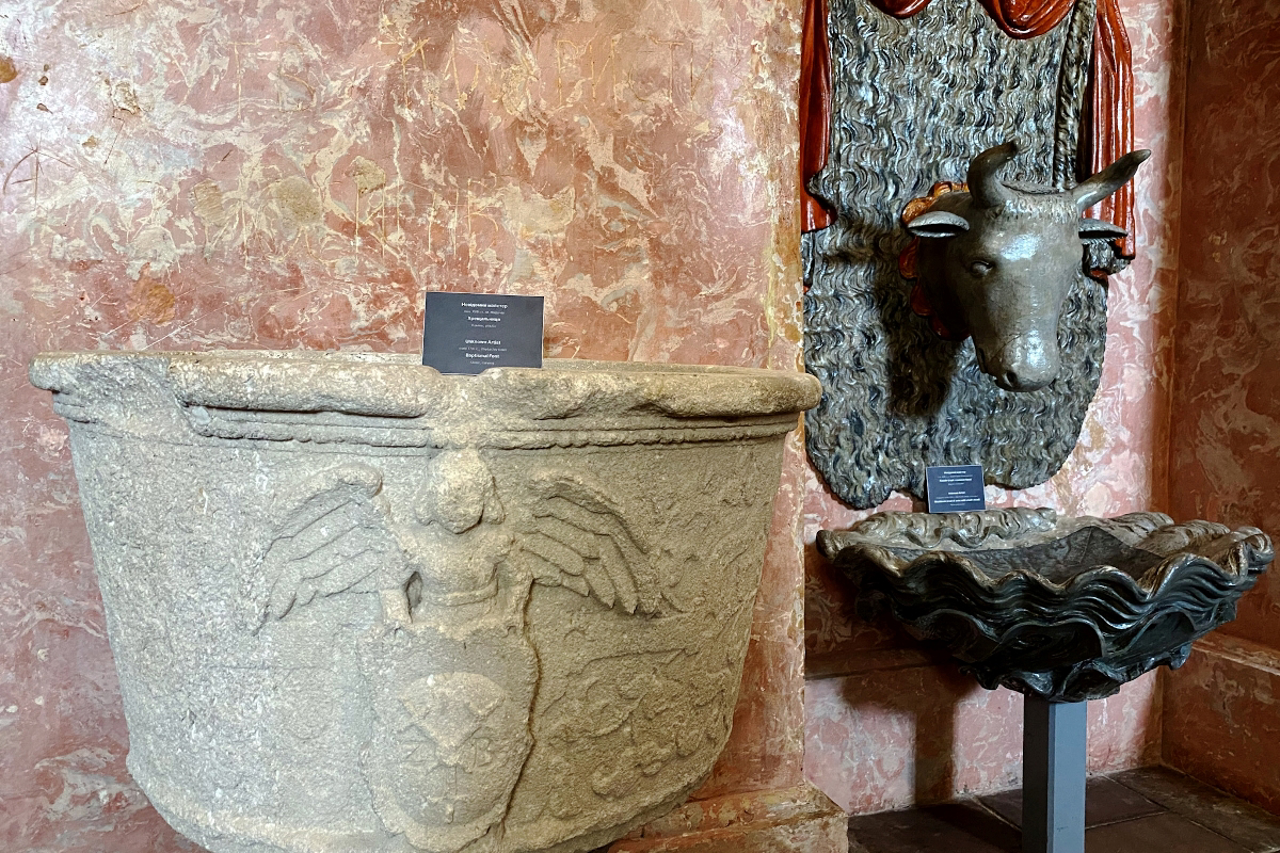The exposition of sacred art in the new museum hall illustrates the tradition of glorification and immortalization of the person in Western and Eastern traditions.
The new exposition "Person, memoriam, sacrum in the art of the 16th-19th centuries" was opened in the restored chapel of St. Anna on the territory of the Olesko Castle Museum-Reserve. This was announced by the administration of the Borys Voznytskyi Lviv National Art Gallery on the official Facebook page.
"This is a small exhibition space, but this hall is an important addition to the museum and tells many secrets of the perpetuation of memory in fine and decorative and applied art," said Taras Wozniak, director of the Lviv National Gallery, in a comment to Ukrinform.
The creation of the chapel in Olesko Castle dates back to 1441, when the owner of the stronghold was Jan of Senn, whose descendants were called Olesky. Over the centuries, the church in the castle underwent significant changes and restorations, fell into disrepair, and later became rich again. Eyewitnesses of those times noted that the altar was covered with gold leaf, the floor was made of marble and stone, and the walls were decorated with frescoes.
After the restoration of the castle and the creation of the museum, the chapel was closed to visitors. Now, repairs have been made here and a new exhibition "Person, memoriam, sacrum in the art of the 16th-19th centuries" has been opened.
"Museum attractions in the sacred space of the castle chapel of St. Anna visualize the evolution of ideas about a person and reveal figurative and plastic and stylistic features of perpetuating her memory in fine and decorative and applied art," the administration said.
The decoration of the chapel is a 16th-century paired tombstone of Anna Senyavska and her young son, executed in the Renaissance style by Hermann van Gutte. Beside her, on the walls, there are funeral portraits, which were an integral part of funeral processes in the days of the Polish-Lithuanian Commonwealth.
The "highlight" of the hall was a wall-mounted tank for holy water in the shape of a shell with a cartouche in the form of a bull's head.
"This is a kind of unique church "apparatus". Its function is that before the liturgy and the consecration of the wine and bread, which are transformed into the blood and body of Christ, for communion, the priest washes his hands. It is carved from wood and dates from the 18th century. brought from the church in White Stone. In those days, this village belonged to the princely family of Vyshnevetsky, so the bull's head is an element of family heraldry. Our restorers worked for more than six months on the restoration of this exhibit, and now we are proud that everything was successful," said the head of the department " Olesko Castle Museum-Reserve" by Borys Shenger.
After the opening of the chapel of St. Anna, journalists and those present were given a tour of the renovated exposition halls of the castle.
Photo: facebook.com/lvivartgallery
Нову експозицію "Персона, меморіум, сакрум у мистецтві XVІ–ХІХ століть" відкрили у відреставрованій каплиці святої Анни на території Музею-заповідника "Олеський замок". Про це повідомляє адміністрація Львівської національної галереї мистецтв імені Бориса Возницького на офіційній сторінці у Facebook.
"Це невелике експозиційне приміщення, але ця зала є важливим доповненням музею та розповідає багато таємниць увіковічнення пам’яті в образотворчому і декоративно-ужитковому мистецтві", – зазначив директор Львівської національної галереї Тарас Возняк у коментарі "Укрінформу".
Створення каплиці в Олеському замку датується 1441 роком, коли власником твердині був Ян із Сенна, нащадків якого іменували Олеськими. Впродовж століть церква в замку зазнавала значних змін та реставрації, занепадала, а згодом знову збагачувалася. Очевидці тих часів зазначали, що вівтар був покритий листовим золотом, підлога – з мармуру і каменю, а стіни – декоровані фресками.
Після відновлення замку та створення музею, каплиця була закрита для відвідувачів. Зараз тут зробили ремонт і відкрили нову експозицію "Персона, меморіум, сакрум у мистецтві XVІ–ХІХ століть".
"Музейні пам’ятки в сакральному просторі замкової каплиці святої Анни візуалізують еволюцію уявлень про особу та розкривають образно-пластичні й стилістичні особливості увічнення пам’яті про неї в образотворчому і декоративно-ужитковому мистецтві", – розповіли в адміністрації.
Окрасою каплиці є парний нагробок ХVІ століття Анни Сенявської та її маленького сина, який виконав у стилі Відродження Герман ван Гутте. Біля неї, на стінах – натрунні портрети, які були невід’ємною складовою поховальних процесів у часи Речі Посполитої.
"Родзинкою" залу став вмонтований у стіну резервуар для святої води у формі мушлі з картушем у вигляді голови бика.
"Це свого роду, унікальний церковний "апарат". Його функція полягає в тому, що перед літургією та освяченням вина та хлібу, які перетворюються в кров та тіло Христа, для причастя, священник омиває руки. Він вирізьблений з дерева та датується XVIII століттям, привезений із костелу в Білому Камені. В ті часи це село належало князівському роду Вишневецьких, тому голова бика – це елемент родової геральдики. Наші реставратори працювали понад півроку над відновленням цього експонату, і зараз ми пишаємося, що все вдалося", – зазначив завідувач відділу "Музей-заповідник "Олеський замок" Борис Шенгера.
Опісля відкриття каплиці святой Анни для журналістів та присутніх провели екскурсію оновленими експозиційними залами замку.
Фото: facebook.com/lvivartgallery



